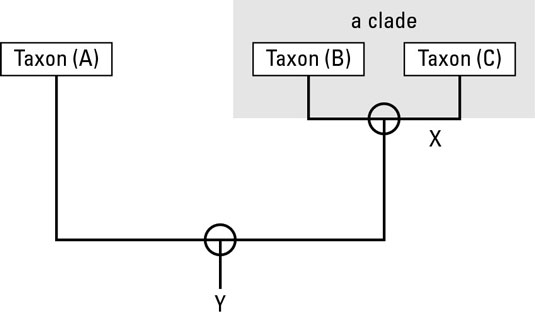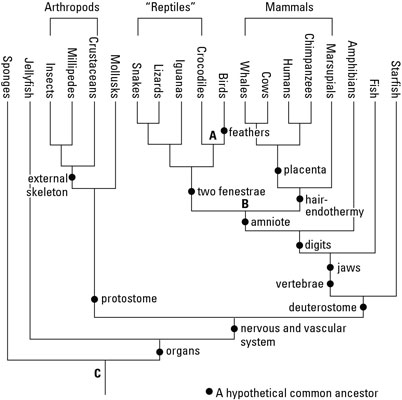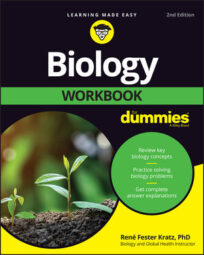You can interpret the degree of relationship between two organisms by looking at their positions on a phylogenetic tree.
Phylogenetic trees not only show how closely related organisms are but also help map out the evolutionary history, or phylogeny, of life on Earth.
Based on structural, cellular, biochemical, and genetic characteristics, biologists classify life on Earth into groups that reflect the planet’s evolutionary history. Just like your family began a long time ago with your original human ancestors, scientists believe that all life on Earth began from one original universal ancestor after the Earth formed 4.5 billion years ago.
Most phylogenetic trees reflect this idea by being rooted, meaning they’re drawn with a branch that represents the common ancestor of all the groups on the tree. In the following figure, the unlabeled branch at the bottom of the tree represents the common ancestor for all organisms on the tree, which in this case is the universal ancestor of all life on Earth.
To read a phylogenetic tree like the one in the following figure, look for this information:
The tips of the branches represent the species or other taxa that scientists compare.
Branches meet at points called nodes that represent the common ancestor of the two taxa.
Scientists call groups that branch out from the same common ancestor sister groups.
An ancestor plus all its descendants form a clade.
Scientists call groups that branch from the tree’s base and are separate from the other groups outgroups. Scientists often deliberately include observations about a group that isn’t very closely related to the group they’re studying in order to give a tree an outgroup.
A computer program that includes an outgroup helps give the tree scale by showing the group scientists are studying in relation to the larger picture of other kinds of life on Earth.
 Reading a phylogenetic tree.
Reading a phylogenetic tree.
For questions 1–5, examine the phylogenetic tree in the following figure and answer the following:
Which group is a sister group to taxon B?
Which group is an outgroup in this tree?
What represents the common ancestor to B and C?
What represents the common ancestor to A, B, and C?
What would you include to identify the clade of A, B, and C?
Use the information in the figure to answer the following questions.

What’s the sister group to cows?
At the top of the tree, a bracket marks the groups that are considered to belong to the reptiles. Would you consider the reptile group, as labeled, to be a true clade? If yes, why? If no, why not?
What represents the common ancestor of reptiles and mammals?
What group was used as an outgroup for this tree?
What does A represent?
If you created a clade that contained organisms with placentas, what other group would you need to include?
The following are the answers to the practice questions.
The sister group to taxon B is taxon C. You can tell because they share a common ancestor.
In this tree, taxon A is the outgroup because it branches from the tree’s base.
The node marked X represents the common ancestor to B and C. It’s the connecting point for their two branches.
The node marked Y represents the common ancestor to A, B, and C. It’s the connecting point for all three branches.
You’d include the node marked Y, plus taxon A, B, and C.
The answer is whales because they share a common ancestor.
The answer is no.
The reptile group doesn’t include all the descendants of the common ancestor. You’d have to add birds to make it a true clade.
The answer is node B.
The answer is sponges because they branch from the base of the tree.
The answer is the common ancestor for birds and crocodiles.
The answer is marsupials because they share a common ancestor with the placental mammals.

